|
by Camela Thompson Vampire mythology has several common constructs in literature, television shows, and movies. As a rule, vampires are humans who have been converted to vampirism by either a bite or exchange of blood. The moment of transformation kicks off with the infected human's death. While vampires have a varying degree of humanity depending on the writer(s), they've remained intolerant of sunlight, drink blood, possess inhuman strength, have poor impulse control, and often become inappropriately enamored with the worst love match possible. Because vampires are fictional, there has always been some variation in the details, particularly around how they are converted and how much they enjoy hunting humans. In my own reading I've noticed a trend: authors are drastically deviating from the norm. Philip Burne-Jones [Public domain], via Wikimedia Commons, 1897 The first time I remember thinking, "Woah, they broke the rules," was when I watched Blade. A pregnant woman was infected by a vampire just before giving birth. The child was a vampire hybrid, inheriting the vampire's strengths but none of the weaknesses. With the help of others, he fought his thirst for blood and kicked much vampire ass. Since then, there has been a streak of change-ups to the myth. Twilight vampires could abstain from human blood if they had the necessary willpower. They avoided sunlight because they sparkled like Liberace's piano. J.R. Ward's Black Dagger Brotherhood has a fantastic hereditary vampire mythology with a race of warrior vampires. Kresley Cole has some traditional vampires and others who were born that way. Then there is The Strain, which has roots in Romanian mythology with a virulent twist.
Why the variation? Why are there rules if people just break them? Because it's more interesting. Because there are more options. If we stuck to the same rules every time, there would only be so many options, and that gets old really fast. I personally enjoy it when an author takes liberties and changes vampires to fit the world they've created. The flavors have become very interesting and make me wonder what the vampire will look like in twenty years. Do you prefer it when authors stick to tradition, or do you like it when an author comes up with a legend of their own? What is your favorite flavor of vampire?
4 Comments
by Camela Thompson I was listening to the radio the other day, and there was a commercial for a local costume shop that went something like this: **ditzy woman's voice** Should I be the sexy nurse? Or should I be the slutty nurse? Despite the set up, this is not a rant about the objectification of women on Halloween. I have no problem with women expressing their sexual side and embracing their bodies by showing them off. If you want to wear that micro skirt, you go girl. What I do wonder is why men don't do the same. Men are viewed as "hot" fully clothed in a three-piece suit, but their date has to wear the bare minimum to get the same reaction. What is up with that? When I Googled "male vampire costume," images of fully clad men concealed with full body capes filled page after page. When I Googled "female vampire costume," I got this: None of the naughty bits are hanging out, but no one is fooled by the sheer spider web material. The corset still presents the girls front and center, and those long stems are on display. What do you think you get when you Google "sexy male vampire costume"? This: The pants are baggy, but there's less of a cape. Show us that tailored suit! Yeah! Come on. Really? I said "sexy vampire," not "fully clothed and concealed hotness." Those aren't even tear away pants. That might have made it better. The same search for women got me this: Am I making my point? In order for her to be sexy, we have a corset and a skirt that is threatening to spill her bum out from the bottom. "Slutty vampire female costume" displayed more of the same with a few variations that just offered a little bit of latex. In order to call the "sexy costume" images even, there needs to be much less material for the men. And probably leather. And maybe some fishnet.... What kind of costumes would you like to see out there? Do you think it's good that men focus on costumes that are entertaining or macho rather than something to attract the opposite sex? Or do you think the intent to attract the opposite sex is there and we just aren't communicating clearly?
by Camela Thompson I have been posting a lot about vampires, and I have to confess that I've hit critical mass. Vampire Fest 2014 seemed like a good idea at the time, but that's not all there is to my book or myself. Don't get me wrong. I have enjoyed blogging about the legends and even scribbling out a couple poorly drawn cartoons. I've covered some of the classics, many of my favorites, and a few of my pet peeves, but I've been ignoring several issues that I feel passionate about and are featured in my writing. All the Pretty Bones is about a woman who has been stalked for a decade before learning she has terminal cancer. Years of living a restricted life, hiding in secure buildings to avoid injury or worse, have taken their toll. The diagnosis is the last straw: she decides to kill her stalker. While she is preparing for a confrontation, women are being murdered and they all look strikingly like Olivia. The primary homicide detective on the case is also her ex, and finds himself struggling between being a good father and saving the woman who broke his heart. A character study of Olivia Kardos from All the Pretty Bones Where do the vampires come in?
Writing is an interesting process. My original idea was nothing like the end result. This is scary to admit, but it's the truth. No matter how much I map things out, they can take a turn for the better and lead to revisions. Reading an article on a local news website got me thinking about my own experience with a stalker and I wondered what would push someone to make a really drastic decision. As I sat down and wrote, things changed. I love reading paranormal books, and that influence came out in my writing. Murders started taking on mysterious qualities and characters had inhuman traits. The incorporation of mythology into the story was an organic part of the process. But if I'm really honest, there was a big reason why I was excited about the incorporation of vampires. Vampires live forever, heal from most injuries, and are powerful. They also are immune to disease. No matter how sick or damaged, if there is a vampire in the picture, there is always a chance at healing. Sure, I'm ignoring all of the death and danger that comes with the monster, but the prospect of strength and health is seductive. Why do I like vampires? The reason why I like watching and reading about vampires is simple. I have systemic lupus. Without going into too many details, let's just say I was never picked first for team sports and I know my way around the doctor's office. I'm not telling you this so you feel bad or to make things awkward. It was important for me to share why I needed my character to have a chance. I work really hard at eating right, exercising, and making lifestyle decisions that help me lead a pretty normal life. But. It would be nice for there to be a cure that simultaneously makes you stronger and faster. I'd give up sunlight for that, although I'm not sold on draining people. Things are going to get real. I've decided to open up more about the inspirations for the book and talk about topics central to the story. We're going to talk about stalkers, illness, vampires, and more. It will be tough, but it will be rewarding. Are you up for the tough topics? Please feel free to leave your comments! I welcome any feedback. By Camela Thompson
Like most modern vampire and werewolf creations, Hemlock Grove takes a unique spin on existing mythology. I haven't read the book yet, but the Netflix original series speaks to Romanian and Romani origins. The terminology and creature construct for their vampire, however, is Slavic (the strigoi is the Romanian vampire). The Upir can be found throughout Ukraine, Russia, Poland, and other Slavic regions with minor variations in legend and spelling. As an aside, the show's mythology gets more confused when considering the vargulf, which is Norse. The Upir is probably a combination of the Slavic pagan mythology and superstitions that carried over once the Russian Orthodox Church was established. People who committed grave sins or did not believe in God were excluded from burial on church grounds. It was rumored these people were witches in consort with the devil and possessed prior to death. Bodies buried in unholy ground were also said to decompose slowly. In keeping with Upir mythology, the vampires on Hemlock Grove can walk in daylight and appear as normal humans. The Upir are born with either a caul or other physical deformity, such as a tail. They feed off the emotions of others, creating chaos and pain for their personal nourishment. The Upir also feed off others. As in: eat them. In Hemlock Grove, a person is born an Upir rather than transformed, and bleeding to death (or perhaps just dying) is the final step in their transformation. This doesn't necessarily conflict with Upir mythology since the Upir raises from the grave. Where the book and the mythology do diverge is the victimology. Most Upir myths involve the consumption of small children before devouring the entire family. Hemlock Grove opted for a more sympathetic version. Kind of. Despite his malicious tendencies, Roman Godfrey is an interesting character. I find him to be a conflicted soul without the tedious introspection and brooding we see featured so frequently. He's screwed up, angry, and not purely evil. He isn't good either. Far from it. But I suppose that's what makes it interesting. Olivia, played by the gorgeous Famke Janssen, is a fabulous Upir. An ice queen with a shriveled little heart hiding in there somewhere. Many of the characters are odd and broken. I enjoyed season one and feel that the werewolf transformation is amazing. I can't recommend season two after seeing the finale. Have you seen the series? What did you think of their interpretation of the vampire? Carnage is usually a requirement, but sometimes sentiment kicks in One of the best things about vampires is the leeway in mythology. They aren't real, so the author/creator has carte blanche to make the monster as horrific or beautiful as they choose. With so many flavors, how is it possible to choose just one favorite vampire? I thought about it for quite some time, and I could not land on just one. My favorite vampires aren’t necessarily reflective of my favorite books, movies, or television shows; they just happen to be characters that stand out. Here are my top five in no particular order.
Selene (Underworld) There are countless movies that showcase male vampires with lethal talents, but there are very few female vampires depicted with their wits about them. Typically, they are vapid beauties with a screw loose and bats in the belfry. They are just nucking futs (*cough* Drusilla *cough*). Then there’s Selene. Finally a woman who is smart enough to sniff out deceit while kicking ass. Bonus points for looking phenomenal in leather pants. Pam (The Southern Vampire Mysteries/True Blood) There are a lot of vampires to love in The Southern Vampire Mysteries, but my favorite has always been Pam. I love her sarcasm, dry delivery, and affection for pastels. True Blood’s Kristin Bauer van Straten did justice to this wonderful character. With the dry delivery, it’s hard to tell whether Pam’s caustic comments are the result of wit or a really twisted take on reality. She consistently sees the writing on the wall first and revels in a little bit of carnage. Gabriel Bolivar (The Strain) I can hear people asking, "Who?" as they read this post. Gabriel is a philandering rock star turned vampire. He seemed well suited to The Strain's play on Romanian strigoi mythology from the start with his goth look (did anyone else think of Marilyn Manson?) and live hard attitude. The guttural snarls and declaration of "MINE!" didn't hurt either. Watching this show made me envision the creator being dragged to a vampire chick flick and emerging with a desperate drive to bring the myth back to its predatory origins. These vampire-meet-alien creatures with their projectile mouth gear take it to a new level, although the biology does remind me of an amped up Jared Nomak from Blade II. If you like your vampires violent, you will love this show. And did we just witness the introduction of the moroi in ninja form? Spike (Buffy the Vampire Slayer) If you want insights into my fascination with Buffy the Vampire Slayer’s Big Bad, check out this post. Otherwise, we’ll just suffice it to say that I like a man with an inflated sense of ego and witty retorts. Damon Salvatore (The Vampire Diaries) I've outlined the reasons Damon Salvatore is so enticing, but the simple truth: he’s gorgeous! The series wouldn't have made it off the ground without him. See also my fascination with an inflated ego and witty retorts. Who are your favorite vampires? Who would you remove from this list? I Am Legend was a very popular movie, but did you know it started out as a book? It’s a little on the short side for a novella and was written in 1954 by Richard Matheson, one of my favorite authors. In many cases, movies run parallel to the book and take significant liberties either with characters or plot points. In this case, there are limited similarities. There are some spoilers ahead, but few apply to the book . If you have not yet seen the movie and want to, you may want to skip this post. I mentioned the similarities are limited. Here they are:
The Protagonist In the movie, Robert Neville was an accomplished virologist with the U.S. Army prior to all hell breaking loose. This is extremely convenient considering he is probably the last fully human person on the planet. He has a collection of rats and lab equipment in his basement to help him find a cure. The book Robert Neville worked at a factory and was good with repair projects around the house. He was not a scientist, but he was curious and determined to discover what kind of pathogen caused him to lose so much. He found a microscope and took books from the library. Both the book and movie spend a lot of time in the character’s head. You are shown the effect of isolation on Neville as he struggles to cope with the loss of everyone he knew. Both Robert Nevilles had a family and lost them, although the method of loss was very different. The Dog I do not care to watch an animal getting hurt, even if it’s clearly fiction. Just ask my husband. I think I ranted about the dog in I Am Legend for two weeks after we left the theater. Now I know to avoid movies with a prominently featured canine. To watch a supposedly cherished family pet and movie Neville's only source of normalcy get infected because its owner was an idiot was tough. The book has a dog, but the poor thing was scraping by in the world on its own before Neville tried to befriend it. Spoiler: Things don’t end well for the book dog, but it isn't a consequence of Neville's neglect. Photograph byy Pepo13 (Own work) [CC-BY-3.0 (http://creativecommons.org/licenses/by/3.0)], via Wikimedia Commons Zombie or Vampire?
The book was explicitly about vampires. In Matheson’s story, the vampires were the result of a pathogen rather than some kind of magical transfer, although they did have an irrational fear of religions symbols. The disease spread like wildfire, the creatures only moved about at night, and there were variations in how the disease manifested. He killed them with stakes and exposure to sunlight. Most were animalistic, but not all. When I watched the movie, the progression of the illness that wiped out the vast majority of the planet was explained as a vaccine gone wrong, mutating into a pathogen. Had I read the book before the movie, I would have wondered if the infected were vampires when it became clear they were sensitive to UV rays. Because a pathogen was in the mix and their intelligence was severely limited, I assumed they were zombies. Preference I enjoyed the book. The book’s ending was intriguing and completely different than the movie. Despite Will Smith’s impressive acting, I will never watch the movie again. I don’t care to watch what happens to the dog, and Neville’s heroic end in the movie was an illogical waste. Have you seen the movie and read the book? How did the movie measure up for you? Which version did you prefer? Have you ever loved a television show that you shouldn’t? I’m talking about the kind of program you watch when the house is empty and you don’t mention to anyone. Except maybe your husband because he caught you shoveling ice cream straight out of the pint container while you were in the fetal position on the couch. And then he makes fun of you for crying over teenage vampire drama and makes barf faces when it’s on and he’s in the same room. Not that I have personal experience with the phenomenon. It's happening! It will surprise you to find out that I have a few secret television shows. Some of them are sappy, some are inspirational, and then there is The Vampire Diaries. It started out innocently enough. I was home sick, flipping through the Most Popular section of Netflix when an image popped up with an attractive cast and the word “vampire.” I was a little worried that I would grow bored with the high school drama. Then I was worried that I would grow bored with the brooding and the whining. Those worries died a painless death when a dreamy, strong-jawed hunk uttered the words, “Hello, brother.”
Hellooooo, nurse. Damon Salvatore wasn’t just a pretty face. He was a vicious psychopath who would kill on a whim with a snappy one-liner. In the middle of all that high school nonsense there was an honest to God vampire and no one was safe. If Damon was in a bad mood, even the family members of the woman he was obviously crushing on weren’t off limits. Necks were snapped, hearts were ripped out, and throats were torn out accompanied by a sexy, lop-sided smile. He offset the droning whine produced by Stelena. “Embrace your humanity!” “No.” *sound of heart being dropped on the floor* Spoilers Ahead! You’ll notice my love for this show was stated in the past tense. The downhill slide started when Damon hooked up with Elena. It was okay for a while because he would slip up and be vengeful. Plus the world got to watch Damon roll around half naked on a semi-regular basis. Unfortunately things got worse. Much worse. There were many events that led to my enthusiasm draining like the slow leak of a tire, but there were four factors that killed it for me. 1. The unexplained and spontaneous cure for the vampire virus. I was on the edge of my seat cheering. Damon had a free ticket to eat BOTH Stefan and Elena. You could have used this to turn it around, guys! 2. Jeremy stopped dying. It was kind of fun to watch the little bugger come back to life. And he's hot, so more camera time is better, even if it's dead camera time. 3. The loss of an interesting antagonist. I kept picturing Oprah saying “You get a doppelganger, and you get a doppelganger, and you get a doppelganger!!” 4. The loss of Petrova. She was Elena only way better. At this point I’m ready for them to roll in the Death Star and just blow up the planet. I should have given it up a while ago, but I can’t commit to turning my back altogether. Unlike True Blood and Dexter - they were dead to me before they officially ended. The most surprising thing to me about my fixation: when I finally let it slip that I watched the show, all but one woman at work admitted to watching it and loving it. Do you have a show you hate to love? Has it pushed you too far or are you still loving it? I have a paranoia of violating copyright laws, so I Buffy the Vampire'd myself. The Buffy the Vampire Slayer television series shouldn’t need an introduction. If you haven’t seen it, go watch it. It’s available on Netflix and Amazon Prime. I would wonder if its appeal is something that stems from growing up on the series, but Joss Whedon’s involvement makes me suspect that those of you younguns who missed its heyday would still appreciate the wit and weird that makes the show. At the very least, you can laugh at the special effects. Visual expectations have changed over the years.
Choosing a favorite character from the series is difficult. This may be due in part to the shifts that took place over the years. We go from a very long high school experience full of monsters, witty one-liners, and angsty slayer-on-vampire love to an average length college experience full of witty one-liners, monsters, and angsty man problems. Despite my sarcasm, there was enough consistency in the series to placate those of us who are resistant to change while developing character arc. The cast stays consistent although there were major tweaks to their personalities. Buffy vacillates between ditzy pint-sized hero to confident badass. There is something about a tiny woman with super strength batting giant bad guys through the air. Her love interests consistently manifest as sensitive guys with an evil streak, and over time her intelligence and complexity are revealed. Xander is the wit machine, master of self-deprecating humor. Now that I think about it, he didn’t change much. Both Willow and Giles take on the role of brainy worriers. Willow broke out of the background with a werewolf boyfriend, a hit and miss talent for witchcraft, and, eventually, a change in sexual preferences. Giles had a somewhat regrettable stint as a cafe musician (very soulful and strange), a history in dark magic, and lots of conflict with the Watchers. The main characters provide a likable foundation, but as the series evolved, I found myself enjoying peripheral characters more than the main cast. My fascination with Angel was likely a symptom of my age - teenage hormones and all that - but he was the bad boy trying to do right. This appeals to me. Or it did until I got bored with it. Next was Oz, Willow’s clever love interest. That interest was short lived as he went from clever and sweet to snarky. I rooted for Cordelia, and secretly loved her thin, shallow exterior and righteously bitchy commentary. She was voted off the island to spin-off land with Angel. Riley Flynn was interesting when he was a covert agent. Then he became extremely insecure and I cheered when he was sent away on a mission. With my fascination of bad boys, it shouldn’t be surprising that the one character who consistently entertained and drew me in was a jerk. A big plus were the self-appointed nicknames. Spike is the man I loved to watch as he bumbled around Buffy crowing about his prowess as the Big Bad. His attraction to the broken and deadly Drusilla was sweet. His dysfunctional fixation with Buffy hedged on stalkerish. As someone who feels stalkers should be taken very seriously, I became a hypocrite and giggled when a Big Bad was caught sniffing Buffy’s sweater. The episode Fool for Love almost broke me, introducing Spike’s origins as a sensitive poet lacking in game and talent. His ascension from outcast to misfit tag-along to a slayer killer was loaded into a single episode character that almost backfired. Somehow the edgy exterior and strange love brought me back. As I re-watch the episodes and work my way through season 5, my favorites will probably change. Who was your favorite character? Did your favorites change as the seasons progressed, or did you always have a preference? The vampire is a newer creature, evolved from centuries of mythological beings that consumed human flesh and blood. Just about every civilization had their own brand of people eater. The Western European revenant is not the oldest legend, but it predates the vampire by at least half a century. The revenant is often described in the High Middle Ages as a bloated, discolored human that has returned from the dead only to hunt down their family and neighbors.
Where Did The Legend Begin? The High Middle Ages were about six hundred years before the discovery of bacteria. The discovery of bacteria happened approximately two hundred years before bacteria was definitely linked as a causative factor in disease. Without science, people had God, superstition, and a lot of fear. Death and disease were everywhere, proliferated by the belief that bathing was evil and a lack of any semblance of sanitation. People didn’t understand what death did to a body and sometimes they didn’t realize when a body wasn’t dead. The description of the revenant often involves bloating and discolored skin. People have theorized that the legend stems from grave robbers disturbing a decomposing body and scaring the crap out of themselves when the coffin lid springs and the body sits up. I imagine this scenario would be entertaining to observe were it not for the bloated body sitting up in its coffin. Even knowing spontaneous movement is possible, I would need a change of shorts (TMI?). These grave robbers probably needed a stiff drink and gathered at the local bar, telling the locals about their brush with a person who came back from the dead, especially since these robbers hacked at the body with their shovels and saved the village from being eaten. Did I mention bodies often leak fluids and have blood bubbling up from their mouths? It wouldn’t have been a huge stretch for these same grave robbers to tell their captivated audience that the body was drinking blood. A story with returned bodies craving blood would spread through a sleepy village like wildfire. Just as people are worked into a frenzy, someone gets sick. The illness is so severe that they are buried a little early (I believe the polite term is “premature burying”). In a dramatic twist of events, the - buried? bury-ee? - gets better and wakes up stuck in a box and scared out of his mind. Can you imagine clawing your way up to the surface, successfully escaping your own grave? Maybe it was a shallow grave or perhaps it was one of those tombs that had a lid that could be moved aside. After being ill enough to be mistaken for dead, it would be difficult to conquer either of those scenarios. The adrenalin that surges after realizing you’ve been stuffed into a box which is then stuffed into the ground would probably help. Once you’ve managed to claw your way out of a box and up through the earth, where do you go? Home. In a time when people thought illness spread because of witches and demons, a relative who was mourned and buried showing up covered in dirt, stumbling around from dehydration, was not a welcome sight. Someone declared dead by a priest would have no good reason to return home. They must be up to no good! The “lucky” bastard was probably attacked with a pitch fork and beheaded before he had a shot at saying, “I got better.” And that is how the legend began. Probably. With Halloween and my book launch approaching (more to come later), this blog is going to change its focus. The trend? Vampires! Plus some other stuff for good measure because there really can be too much of a good thing. In the spirit of kicking off my Vampire Fest the right way, I decided to begin with the earliest vampire movie I could get my hands on: Nosferatu.
Nosferatu was based on Bram Stoker’s 1897 Gothic Horror novel, Dracula. More accurately, there are aspects of the story that were followed very closely and there are elements pulled out of left field because the production company was unable to gain rights from Stoker’s heirs. Spoiler Alert! The main differences between the novel and movie were Van Helsing’s complete lack of involvement and the resolution. Instead of a violent confrontation, the heroine of the movie sacrifices herself to save the townspeople. By simply willingly offering her blood throughout an entire night, the vampire perishes with the rising sun. This is critical to point out because it was truly a sacrifice for the young woman. Count Orlok was a hideous monster with a deformed head, giant ears, pointy teeth, crazy eyes, and giant hands. There is an ongoing trend in the fictional world of vampires. Some elements stay the same: the thirst for blood, eternal life, and inhuman strength. What has changed are the degrees of humanity and physical desirability. Today’s vampires are broody, gorgeous, and capable of complex emotions, particularly love. Many are even able to abstain or minimize their human consumption for the good of those around them. At times it goes too far (Sparkles? Really?), but I understand the impulse to soften the monster. It’s like finally being able to date the bad boy who really does have a sensitive side just for you. Vampires branched out of the horror genre in film dating back to at least the 1960’s. Now it is rare to watch a film or read a book with vampires who are truly bloodthirsty and lacking all humanity. Emotional vulnerability gives us the opportunity to cheer for the bad guy and hope he can overpower his demons and not eat his girlfriend, but sometimes it gets a little boring. (For those of you who have watched The Vampire Diaries, it’s like watching Damon go from moody psychopath to pining and lovestruck. He’s still gorgeous, but lacking the edge that had me binge watching the series in the first place.) The beautiful vampire was not at all how the legend began. Whether you look to the Norse draugr, Western European revenants, wendigo/wechuge of North America, or the vampires of Romani/Romanian/Slavic origin, the creature was a terrifying fiend who consumed the blood and/or flesh of its family and neighbors. Superstition fed into mass hysteria that led to executions and strange burial measures. Infants were murdered because they were unlucky enough to be born with a defect or a red caul. Nosferatu captures the traditional image of the vampire and reminds us of where it all began. What do you think of today’s vampires? Author’s Note: The decision to watch Nosferatu should be accompanied by adjusted expectations. Switching over to a black and white film with written blocks of dialogue was a challenge for the first five to ten minutes. The dramatic character makeup and exaggerated pantomimes kept me suitably entertained until it dawned on me that the movie was very advanced for 1922 technology. Shadows appeared from nowhere and Count Orlok faded in and out of scenes. |
Camela ThompsonFreelance writer and Dark urban fantasy author featuring vampires with bite. My BooksCategories
All
Archives
July 2020
|
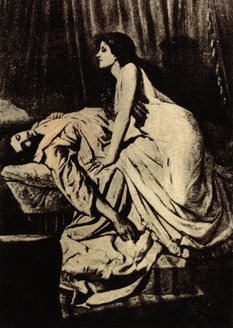
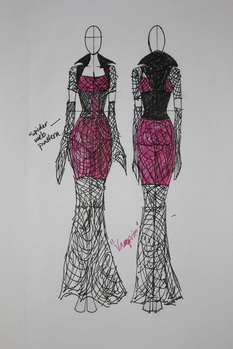
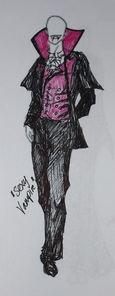
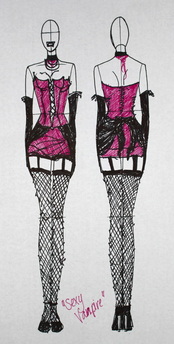
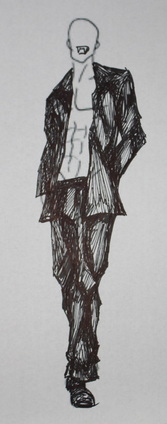
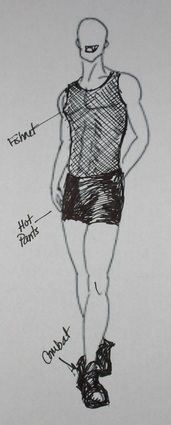
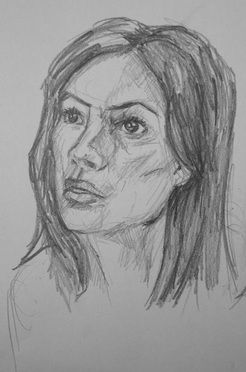
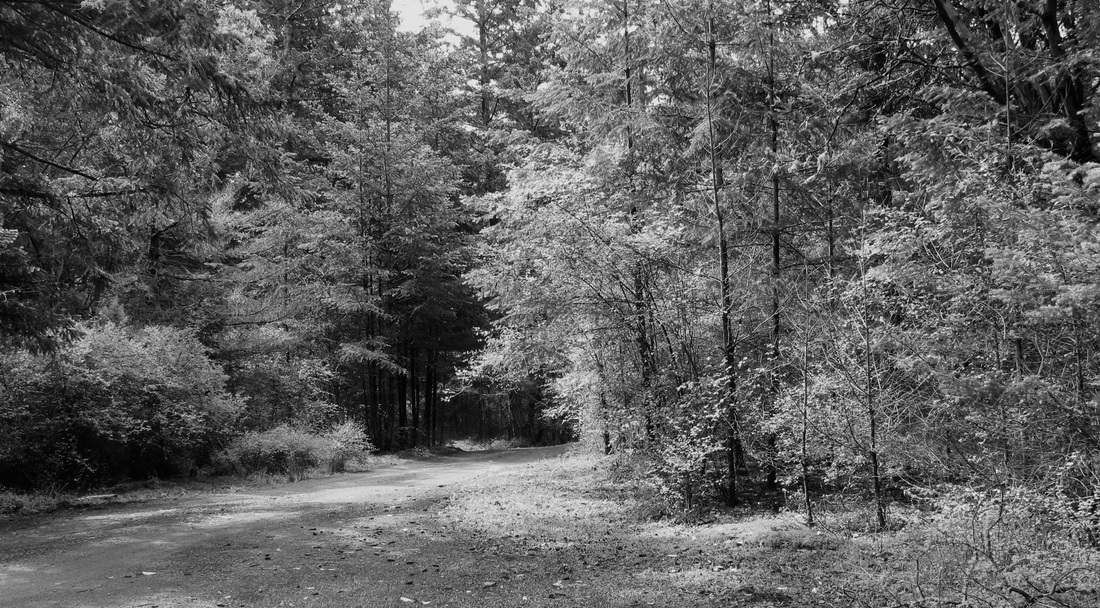
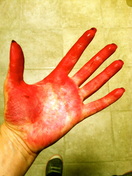
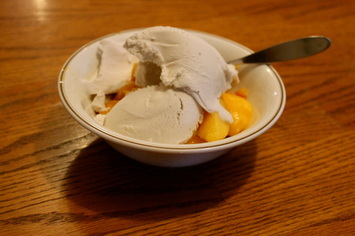
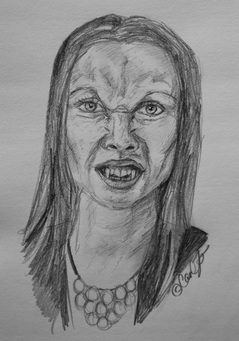
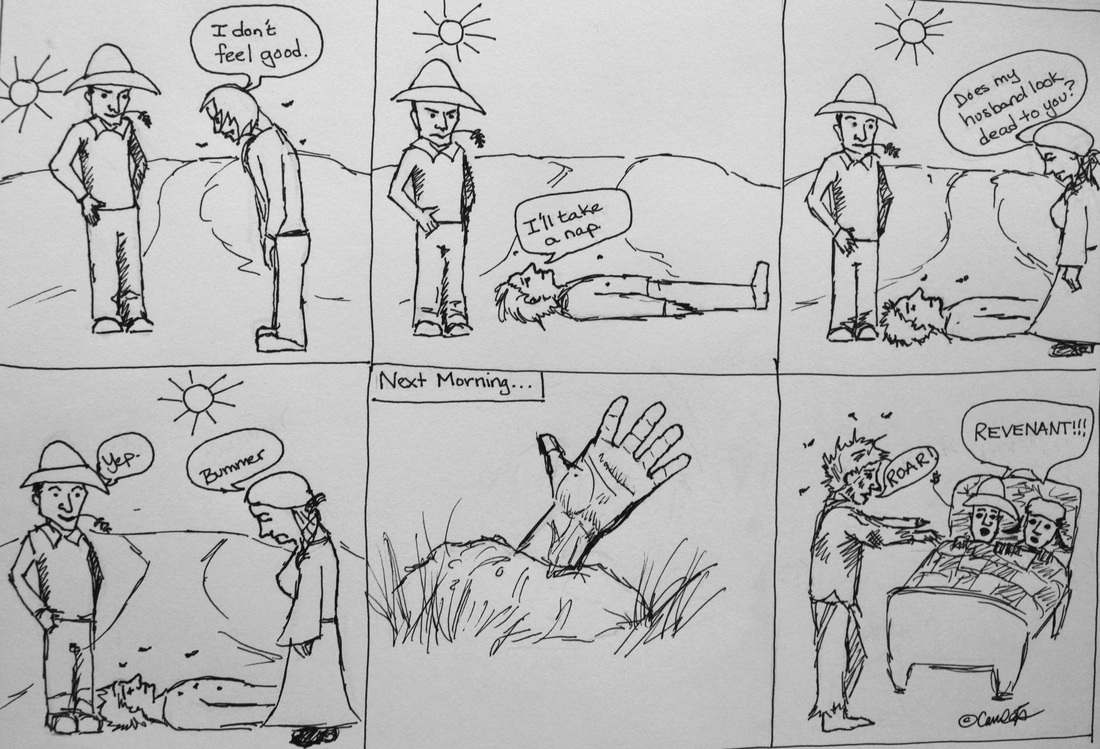

 RSS Feed
RSS Feed